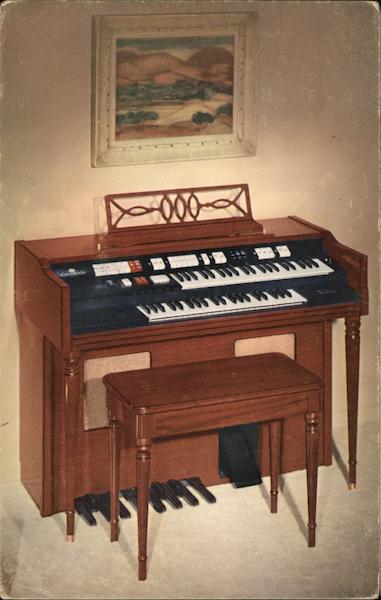

By using the drawbars, the organist can combine a variety of electrical tones and harmonics in varying proportions, thus giving the Hammond vast registration. The most revolutionary difference in the Hammond, however, is its huge number of tonewheel settings, achieved by manipulating a system of drawbars located near the manuals.
#WURLITZER ORGAN MODEL 4100 SERIES MANUAL#
While these features mean that the electric organ requires greater musical skills of the organist than the reed organ has, the second manual and the pedalboard along with the expression pedal greatly enhanced playing, far-surpassing the capabilities of the typical reed organ. From the beginning, the electronic organ has had a second manual, also rare among reed organs. Unlike reed organs, this gives great control over the music's dynamic range, while at the same time freeing one or both of the player's feet to play on a pedalboard, which, unlike most reed organs, electronic organs incorporate. Instead of having to pump at a constant rate, as had been the case with the reed organ, the organist simply varies the position of this pedal to change the volume as desired. The organ is electrically powered, replacing the reed organ's twin bellows pedals with a single swell (or "expression") pedal more like that of a pipe organ.


In place of reeds and pipes, Robb and Hammond introduced a set of rapidly spinning magnetic wheels, called tonewheels, which excite transducers that generate electrical signals of various frequencies that are mixed and fed through an amplifier to a loudspeaker. The Hammond organ quickly became the successor of the reed organ, displacing it almost completely.įrom the start, tonewheel organs operated on a radically different principle from all previous organs. The first widespread success in this field was a product of the Hammond Corporation in 1934. Meanwhile, some further experimentation with producing sound by electric impulses was taking place, especially in France. Cahill's techniques were later used by Laurens Hammond in his organ design, and the 200-ton Telharmonium served as the world's first demonstration of electrically produced music on a grand scale. Thaddeus Cahill's gargantuan and controversial instrument, the Telharmonium, which began piping music to New York City establishments over the telephone system in 1897, predated the advent of electronics, yet was the first instrument to demonstrate the use of the combination of many different pure electrical waveforms to synthesize real-world instrument sounds. Electrically powered reed organs appeared during the first decades of electricity, but their tonal qualities remained much the same as the older, foot-pumped models. The use of electricity in organs emerged in the first decades of the 20th century, but it was slow to have a major impact. Telharmonium console by Thaddeus Cahill, 1897. Various types of electronic organs have been brought to market over the years, with some establishing solid reputations in their own niche markets.Įarly electric organs (1897–1930s) At the time, some manufacturers thought that emulation of the pipe organ was the most promising route to take in the development of an electronic organ. In the 1930s, several manufacturers developed electronic organs designed to imitate the function and sound of pipe organs. This concept played an important role in the development of the electric organ. The reed organ is thus able to bring an organ sound to venues that are incapable of housing or affording pipe organs. While reed organs have limited tonal quality, they are small, inexpensive, self-powered, and self-contained. In a fashion not totally unlike that of pipe organs, reed organs generate sound by forcing air over a set of reeds by means of a bellows, usually operated by constantly pumping a set of pedals. The immediate predecessor of the electronic organ was the harmonium, or reed organ, an instrument that was common in homes and small churches in the late 19th and early 20th centuries.


 0 kommentar(er)
0 kommentar(er)
